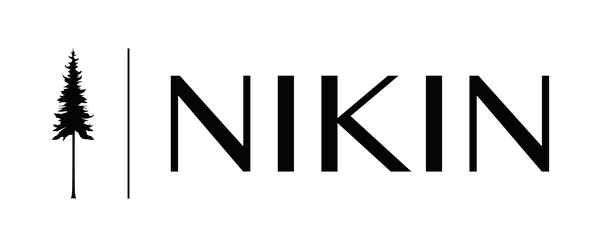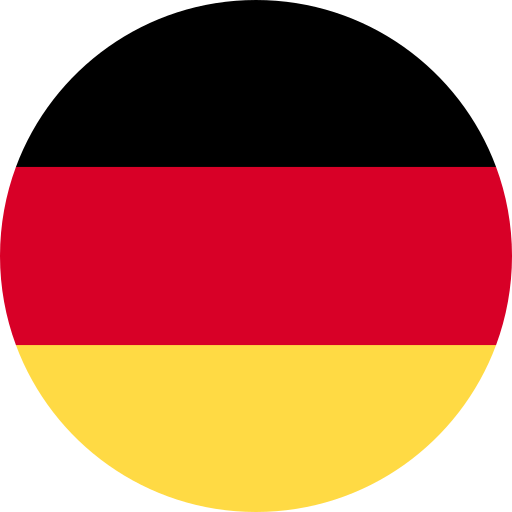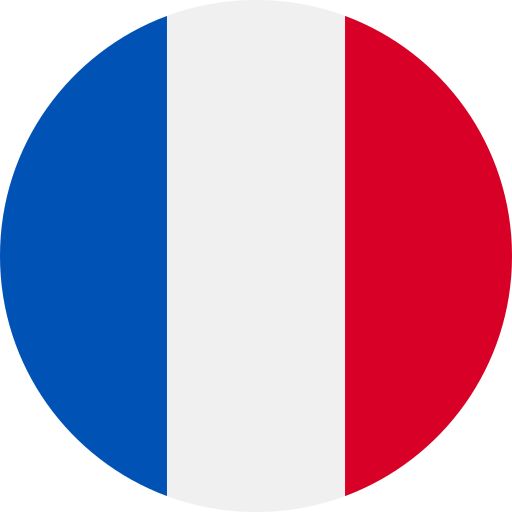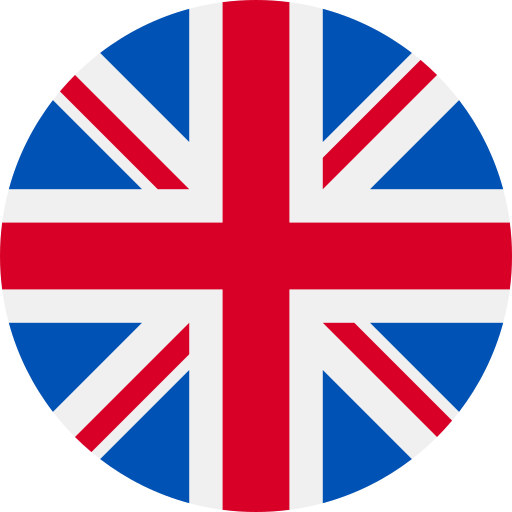Materials
Get to know our textiles better
Are you interested in the materials and textiles used at NIKIN?
Then you've come to the right place. We would be happy to tell you more about the different materials and product elements.
Polylana®
Polylana® is a sustainable synthetic fibre. The fibre consists of polyester pellets and recycled PET. The material can be combined with various other textiles for optimal use. For our Treeanies, we use a blend of Polylana® and cotton. Polylana® requires significantly fewer resources than acrylic, for example:
- 76% less energy consumption
- 85% less water consumption
- 76% less waste
- 19% less CO2
- 32% less microfibres emitted
We are the first brand that is allowed to use the material in the EU. Learn more about the topic in this blog.
This is what we like about the material: As of now, we can't think of a better material to complement cotton for our caps. Polylana® offers the positive properties of acrylic such as warmth and shape retention of the product, but at a much better eco-balance.
Source

ECONYL®
The company Aquafil produces the recycled nylon from plastic waste from industry as well as from the sea in SloveniaAquafil. Part of our bikinis and swimsuits are made of ECONYL®.
That's what we like about the material: we appreciate that ECONYL® is made from waste and thus something new can be created again from old.
Source

SEAQUAL®
SEAQUAL® YARN is upcycled and consists of 100% recycled polyester. The plastic, which later becomes the yarn, comes from marine debris and post-consumer plastic. These are collected thanks to the SEAQUAL INITIATIVE in the Mediterranean Sea, along the European coast and on the west coast of Africa. SEAQUAL® YARN is almost identical to conventional polyester and can be used in many sizes and shapes. For example, as continuous filament or as staple fiber.
The second hand yarn is used for clothing, but also in home textiles. It is also used in contract and automotive upholstery.
Source

Hemp
Hemp is a natural, robust and particularly sustainable fiber whose use has a long history. Hemp is the name of the plant. But hemp fibers are the bast fiber bundles from the stems of the hemp plant. Hemp is a climate-resistant and relatively undemanding crop that can be grown all over the world. We use hemp grown in Europe for our products. Cultivation is resource efficient because hemp requires little water, grows very quickly, uses little to no pesticides, and yields significantly more output per area than cotton.
Natural active wear made from hemp: Due to the raffia structure and the resulting properties, textiles made of hemp have a temperature-regulating effect - breathable in summer and insulating in winter. We use a mix of hemp and organic cotton for our textile products, combining the best properties of both fibers. Hemp is a very robust material and therefore textiles made by hand are particularly durable.
Source 1
Source 2
Source 3
Source 4

#tide ocean material®
Plastic pollution of the environment and waters is a worldwide problem. But clever minds have figured out how to remove such waste from the ocean and eventually reuse it. The innovative #tide ocean material® is made from collected ocean plastic, mainly in cooperation with local fishermen from Southeast Asia, by the Swiss company tide ocean SA from Basel. In cooperation with the Swiss University of Applied Sciences, the collected plastic is upcycled into granules and finally processed into high-quality and sustainable products such as furniture, textiles and much more. Because only recycled plastic is used, fossil raw materials such as petroleum can be saved.
For our Impact Bracelet from the collab with Viva con Agua, we use the sustainable #tide ocean material®.
The advantages of #tide ocean material®:
- Made from 100% recycled ocean-bound plastic (0% new plastic)
- Converting single-use plastic into sustainable goods
- Made in Switzerland
- CO2-neutral transports
- In 2 years, #tide ocean material® has recycled the equivalent of more than 25 million plastic bottles
- The upcycling process of #tide ocean material® causes up to 80% less CO2 emissions than the production of new plastic/plastics

Linen (-fibres)
Linen fibers come from the cultivated plant true linen. In addition to linen, the group of so-called bast fibers also includes materials such as hemp fibers or jute. If the fibers are harvested from the young plant, they are fine; the older the true linen is, the coarser the fibers become. Linen is considered a breathable textile, which allows little bacteria, dirt and dust to adhere to its surface.
This is what we like about the material: we prefer linen because it is a natural fiber and appreciate that its production requires little to no fertilizer or even pesticides, even when grown conventionally.
Source

Cork
In the textile world, cork describes the bark material of the cork oak.This is mainly found in the Mediterranean region. Almost half of the world's production comes from Portugal. The cork oak can grow up to 250 years old and 20 meters high. Once the tree is 30 years old, the bark can be "harvested" every 9-12 years for the next 150 years. This slow process does not harm the trees. Cork is water repellent, difficult to burn, elastic and lasts about 20-50 years. Our wallets also show how versatile cork is to work with.
Here's what we like about the material: as a natural fiber and thanks to its durability, cork is a great quality material for a variety of products.
Source

Piñatex®
Piñatex® is a natural leather alternative obtained from pineapple residues. The raw material is a by-product of the pineapple harvest. The use of pineapple leaf fiber, an agricultural waste product, offers the opportunity to create a commercial industry for the development of agricultural communities with minimal environmental impact.
This is what we like about the material: the material is an optimal solution for products that are often made of leather, because at NIKIN we do not use animal products. In addition, the manufacturer of Piñatex® makes it a point to ensure that not only the textile, but also the production chain is fair and environmentally friendly.
Source

Tree-free paper (sugar cane waste / bagasse)
Our tree certificates as well as the hang tags on our clothes are a waste product of the sugar cane industry. Bagasse, as the material is also called, can be formed into a paper-like material together with a natural starch-based binder. The energy required to produce this type of paper is less than for wood fiber, for example. We also use the tree-free paper in our office. Our supplier for the paper is colonia2go. Here you can find the official certificate.
That's what we like about the material: It is important to us to consistently live our values. Since we prefer to plant trees rather than cut them down, we do not use resources that damage trees in our product and work processes. Paper made from sugar cane is therefore a perfect fit for us.
Source

Bio-based Grilamid
The plastic is partially based on bio-substances and thus stands out from conventional Grilamid. We use this for our TreeGlasses.
That's what we like about the material: it's very stable, and the glasses can withstand bumps or falling down.
Source: Internal manufacturer info sheet. Feel free to contact us if you want to learn more.

Organic cotton and regular cotton
The fabric cotton comes from the seed hairs of the cotton plant, a mallow plant. There are about 21-50 species in subtropical and tropical weather regions. The textile is considered to be skin-friendly and hygienic, as it can be washed very hot without being dyed. Besides textiles, cotton is also used for paper, nets and fillers. Findings indicate that we have been processing and using the raw material for 9000 years next . Particularly practical: untreated, cotton is coated with a layer of wax and is therefore water-repellent. Until the industrial revolution, cotton, like silk, was considered a luxury good, as it was very time-consuming to process the raw material into a cotton textile by hand. Rounded up, half a kilo of cotton took 13 working days to produce at that time.
The difference between organic cotton and normal cotton lies in the production process. Organic cotton is produced without pesticides and fertilizers. Other important like points such as soil fertility, water pollution and working conditions are also taken into account.
This is what we like about the material: we appreciate in cotton that it is a pure natural fiber and always try to find an organic cotton manufacturer.
Source

Recycled glass (TreeBottle glass) and waste glass (TreeBracelet)
Glass consists of a high proportion of quartz sand. Potassium carbonate or sodium carbonate is also often added to lower the high firing temperature for processing. Man has been making glass as early as the 5th century BC. At NIKIN, the glass used for both the TreeBottles and TreeBraclets is recycled.
This is what we like about the material: it can be washed in the dishwasher, unlike our colored stainless steel bottles, and with the TreeBracelets we can reuse glass that has already been used, which is very important to us.
Source

Bamboo viscose
General viscose fibers are man-made fibers made from natural polymers, such as cellulose. The liquid, honey-like cellulose mass is converted into a yarn by manufacturers using several processes. Viscose fabric is generally very easy to dye and spin. Likewise, the fabric is often found in combination with other materials in textiles. Bamboo viscose, as the name already describes, is a viscose fabric based on bamboo pulp.
This is what we like about the material: we appreciate in bamboo viscose that it is not a synthetic material and can be used in many ways. In addition, bamboo grows back very quickly. next Depending on the type of viscose, the recovery rate can be very high (e.g. 99% for Tencel from Lenzing).
Source
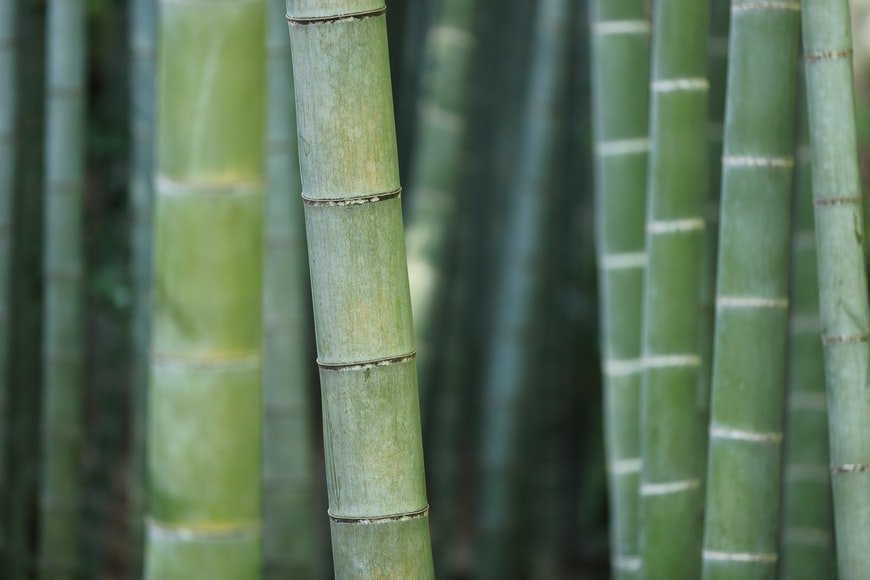
Recycled polyester
Polyester is a synthetic fiber. The polyester fiber appeared in the 1950s and was particularly popular at the time because the fabric stays beautiful for a long time without ironing and was inexpensive. The textile can be well adapted to its intended use, is generally mostly very elastic and resistant to abrasion and tearing.
NIKIN uses polyester only when it makes sense. For example, in bikinis and swim shorts, the quick drying of the material is the main consideration in the choice of fabric. The polyester in our products is recycled polyester whenever possible. There are 2 types of recycled polyester: mechanically recycled and chemically recycled. In the chemical process, the polyester can be recycled more often without losing quality. In the mechanical one, the quality decreases each time due to more and more shortened fibers.
This is what we like about the material: recycled polyester is a fabric that has already been used, so no new raw material is needed for production. In addition, polyester has qualitative properties such as durability, which natural fibers do not have.
Source, internal expertise

Normal acrylic (polyacrylic)
Acrylic is a synthetic fiber. The fabric looks wool-like and has a heat insulating effect. Likewise, the textile is mothproof and dries very quickly. The fabric appeared in the 1950s. Only remnants and older versions of NIKIN caps and hats contain normal acrylic. In the future, we would like to do away with the material altogether.
This is what we appreciated about the material in the past: its heat-insulating effect and the long durability of the material. However, from an ecological point of view, we do not want to continue using it in the future.
Source
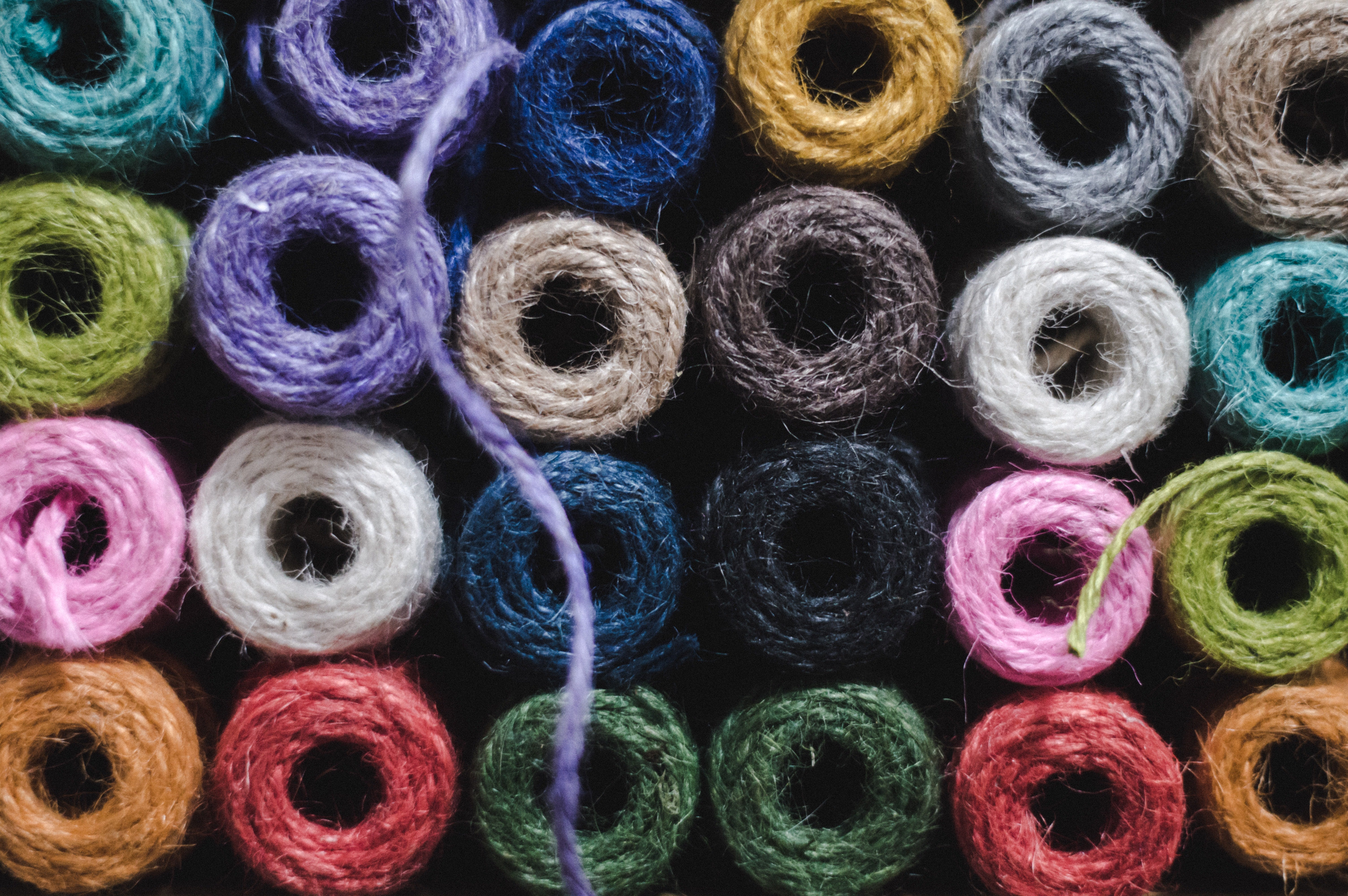
Spandex (-fibres)
The fabric is synthetic and consists of at least 85% polyurethane, also called plastic. Spandex is very elastic, but tear-resistant, there is no similar natural fabric so far, which offers these two properties to the same extent. The textile is often used for tights or sportswear, as it can expand and then retract back to its original shape.
This is what we like about the material: spandex is used for purely functional reasons. This is because the material enables an elasticity that cannot be produced at all or only to a very limited extent in natural fibers.
Source

ECORUBBER® & EVA & PU Mix
This mix is found in the soles of our TreeShoes. ECORUBBER® consists of at least 70% recycled tires as well as EVA and PU, which are both plastics.
That's what we like about the material: we were looking for a recyclable alternative to traditional plastic soles when producing our first shoe. Thanks to us ECORUBBER® has succeeded in this to 70%. Of course, for new models we will always research if this value can be increased.
Source: Internal manufacturer info sheet. Feel free to contact us if you would like to learn more.

Recyclable enamel
Enamel is a layer of glass adhered to iron. Surfaces of this type are easy to clean, can be easily colored and printed. They are also fireproof to a certain extent. Already in 1500 BC this technique was known in Europe as well as in the Middle East. You will find this material in our TreeMugs.
That's what we like about the material: For the mugs we were looking for a material that is light and stays beautiful for a long time. It was also important to us that the material could be recycled if disposed of properly.
Source

(Precious) steel
Steel consists of an iron-carbon alloy. There are over 2500 different types of steel, all of which are used for different areas and products. People have been handling iron as early as 3500 years ago. Today, the steel industry is an important industry for many countries, producing over 1691 million tons of steel annually. Since the mining of iron ore is very costly, manufacturers are increasingly using recycled iron materials. In Europe, we divide steel into different grades of purity: unalloyed quality steels, unalloyed stainless steels, alloyed quality steels and alloyed stainless steels.
That's what we like about the material: stainless steel is durable.
Source

This is how we select our materials
We follow these guidelines when selecting our materials and fabrics:
- Whenever possible, we always use organic natural fibres. We are concerned that we produce as little as possible from synthetic resources.
- We prefer a cotton fibre to a synthetic, non-recycled fibre, even if it is not organic quality.
- We do not use animal materials such as leather or wool.
- We prefer to use recycled material. This way we need resources that already exist and do not have to be newly extracted for us. Unfortunately, the quality of the material can decrease during recycling and does not always meet our quality standards. If this is the case, we rely on new materials.
- We strive to ensure that accessories such as buttons or zips are also made from natural or recycled materials. Wash labels or insulated labels have a small share and are therefore not equally in focus. Whenever possible, we also choose a raw material for these that is made from natural or recycled resources.
- It is important to us that the materials are used correctly. Each material has its own properties. We choose materials that are best suited for a product to ensure quality as well as comfort, at an average price.
- The aim is for the materials to be traceable.
- NIKIN has no numerical data to measure the effective sustainability impact. This is also because even among experts there are different opinions about the best material. next Unfortunately, it is not possible at this stage and given the size of NIKIN to research this ourselves. Nevertheless, our goal is always to make a conscious choice of materials in line with our values such as environmental awareness and closeness to nature.
